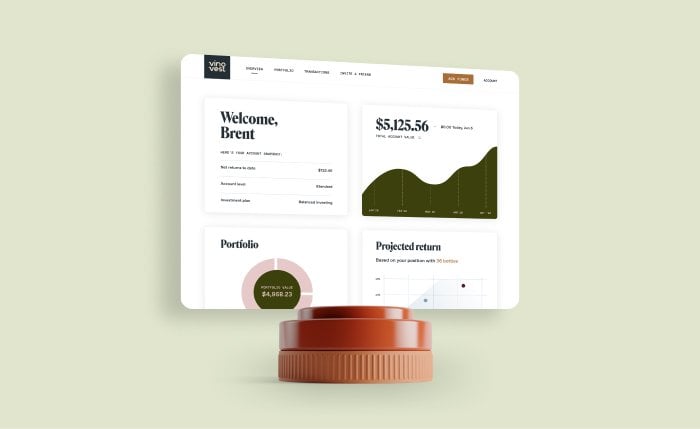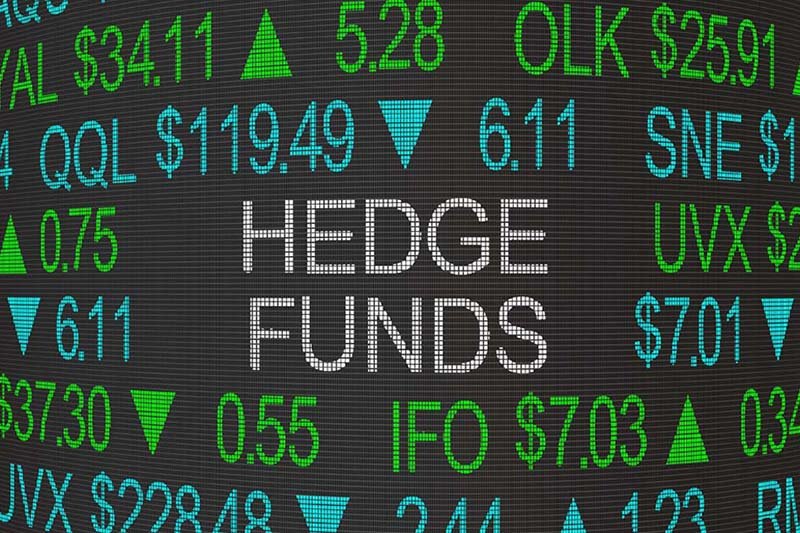What Is Inflation Trade? (Benefits, Assets To Invest In 2025)
A 40-year high inflation rate in the United States has many investors looking for ways to protect their investments, bringing the spotlight on inflation trading.
Through inflation trade, a seasoned investor invests in assets that historically outperform inflation. This not only protects their portfolios from inflation but also allows them to earn hefty profits.
Let’s discover everything about inflation trade and how inflation affects your assets’ values. We'll also cover 7 fantastic inflation trade strategies, including investing in fine wine and real estate. Finally, we’ll explore how Vinovest can help you play the inflation trade game.
Further reading
- Delve into the world of Inflation-Proof Investments with this helpful guide.
- Also, check out everything you need to know about Investing in Fine Wine.
A Quick Intro To Inflation Trade

Inflation trading involves focusing your investment portfolio on assets that fare well under inflationary pressures so you can earn a profit. You can either shift your portfolio to include assets like fine wine and real estate, whose values tend to increase with rising inflation or outperform it. Or, you can make speculative trades using assets that are highly susceptible to price inflation, like commodities.
But inflation trade doesn’t begin during high inflation.
Investors need to take a risk and invest in inflation-proof assets before inflation hits. Investors do this by keeping an eye on Federal Reserve Bank’s actions and inflation expectations.
The Federal Reserve Bank (the Central Bank of the USA) tries to maintain healthy inflation rates through monetary policy.
Monetary policy involves buying and selling bonds to increase or decrease the economy's cash flow and money supply. The Federal Reserve also adjusts interest rates to encourage or discourage borrowing.
For example, the Federal Reserve buys Treasury bonds in the open market to inject cash flow into the economy. This swaps out bonds in exchange for cash - increasing the money supply. And if the Federal Reserve buys bonds, prices are pushed up, and the interest rate rises. A higher interest rate discourages borrowing since you’ll have to pay back more interest on your loan.
By monitoring the action of the Central Bank, a savvy investor studies inflation expectations and hedges their portfolio against it. According to Morgan Stanley, an investment banking firm, investors should position their investments for higher interest rates and inflation.
Even though the Pearson Institute Of International Economics predicts that inflation in the United States will fade in 2023, you can still plan for unexpected inflation rises through inflation trading.
Now, let’s see why investors guard their portfolio’s from rising inflation.
How Does Inflation Affect Asset Values?

The Consumer Price Index measures the core inflation rate in a country and tells us the percentage increase in the cost of goods and services.
As the Consumer Price Index rises with inflation, your purchasing power reduces, decreasing the value of your fixed income.
Furthermore, inflation reduces the value of traditional assets in your investment portfolio. For example, if you invest in a long-term bond that pays a fixed interest rate of 2%, and the core inflation rate increases to 4%, the real interest rate is negative 2%. Although the nominal value you receive from your bond increases, your real yield decreases due to higher inflation, and your invested money would be able to buy much less.
In fact, according to the Bureau Of Labor Statistics, “prices for nearly everything - from food to shelter to transportation - are up.” So by the time you get the money from your Roth IRA account, it would be worth much less.
So, by shifting your assets towards markets that can benefit from rising inflation, you’re employing an intelligent inflation trade strategy.
But what assets perform well under inflationary pressures?
7 Great Inflation-Proof Assets to Invest in 2024
Here’s a list of 7 asset classes to invest in for an effective inflation trade master plan.
- Fine Wine
- Hedge Funds
- Commodities
- Real Estate
- Stocks
- TIPS (Treasury Inflation Protected Securities)
- Inflation Swaps
1. Fine Wine

Investing in fine wine is an excellent inflation trade strategy and is even endorsed by American business magnate Warren Buffett.
Fine wine is a great inflation hedge because its prices rise with inflation, and over the long term, fine wine’s positive returns have outperformed the global inflation rate.
In 2021, Champagne prices witnessed a 41% average increase, while the United States saw a 4.7% annual inflation rate.
Furthermore, fine wine beats other traditional investments whose values suffer from high inflation. For instance, over the last 15 years, the fine wine market has generated 13.6% annual returns, while the S&P 500’s real yield was 8.5%.
But how do you invest in fine wine?
You can begin investing in wine in several different ways:
- You can buy, store, and sell bottles yourself.
- Bid at wine auctions for access to exclusive vintages.
- Purchase and sell wine through reputable brokers.
- Invest in wine stocks and bonds like Diageo PLC.
- Let a wine investment company create a portfolio of investment-grade wines for you.
But investing in fine wine can be tricky.
Making sure you have temperature and humidity-controlled storage facilities for your wines can be costly. Furthermore, tracking down a trustworthy and reputable broker to source your wines and ensure their authenticity for you can be difficult and time-consuming.
That’s why Vinovest handles the hard work for you.

Vinovest is an expert wine investment company that will source, authenticate, and sell rare and authentic wines for you from around the world.
You can even store your bottles in Vinonest’s temperature-controlled bonded warehouses and get matched up with the highest price buyer in their network when you decide to sell.
Vinovest’s advanced AI-based online platform takes thousands of wines into account and generates an investment-grade portfolio for you. Vinovest’s Master Sommeliers then oversee the selection of wines that go into your portfolio and handpick a collection of wines that reflect your investment preferences.
2. Hedge Funds

Hedge funds collect money from multiple investors and spread it across various investments to increase your chance of a positive return.
Hedge funds can invest in growth stocks, commodities, and several other financial instruments.
Investors in hedge funds typically trust their money to a hedge fund manager who makes decisions about the investment portfolio. So, you don’t usually get a say in where your money goes, just which hedge fund manager to choose.
3. Commodities

Commodities are a broad class of alternative investments that include goods that can be bought and sold. Precious metals like gold, raw materials like oil, and finished products like orange juice are all examples of commodities.
Investing in commodities is an excellent inflation trade strategy because commodity prices also increase as global inflation rises.
For example, an increase in the core inflation rate raises oil prices. Increased oil prices raise input costs for other commodities like petrol and gasoline, increasing these commodity prices as well.
There are various ways to invest in commodities:
- Buy commodities like gold or silver directly.
- Future options allow you to buy contracts that promise to purchase commodities in the future.
- Invest in the stocks of gold mining companies like Barrick Gold.
- Invest in ETFs or mutual funds that invest in commodities.
However, commodities are subject to demand and supply factors that can make them volatile, and the World Bank claims that climate change may increase commodity price volatility in 2024.
4. Real Estate

Real estate is one of the best alternative investments you can add to your portfolio during times of persistent inflation. This is because increased inflation leads to a higher price for real estate.
Here are some ways to begin investing in real estate:
- Buy and rent a commercial property.
- Lease out a property that you own.
- Put money into Real Estate Investment Trusts.
- Invest in real estate via mutual funds.
5. Stocks

Stocks are a traditional investment that can perform well under inflationary pressures, but not all stocks are equal. Investors should look for value stocks, growth stocks, and companies with pricing power to provide the best protection from persistent inflation.
Value stocks are stocks with a relatively low price compared to a company’s performance. Value stocks are expected to increase in value over time as investors realize the equity’s price doesn't match the company’s performance.
Growth stocks are expected to grow at a higher rate than average stocks - making them likely to outperform the rest of the market.
A company with pricing power can shift input costs to consumers and charge a higher price as inflation increases. This should raise the value of their stocks.
6. TIPS (Treasury Inflation Protected Securities)

TIPS (Treasury Inflation Protected Securities) are government-backed bonds sold by the United States Treasury that have their interest rate tied to inflation.
A higher inflation rate means the bond's interest rate increases as well.
TIPS are a solid inflation hedge but are only likely to protect your investment portfolio from losing value rather than generate significant returns.
7. Inflation Swaps

An inflation swap is a derivative contract between two investors to transfer inflation risk to another party by exchanging fixed cash flows. So, you exchange your fixed interest rate with someone else and receive payments based on a floating interest rate in return.
This floating interest rate is tied to the inflation rate.
Here we have it - seven amazing assets that you can add to your inflation trade strategy and protect your purchasing power.
Fine Wine: An Amazing Inflation Trade

Inflation isn’t always bad news for a day trader or investors. By adding an inflation hedge like fine wine to your inflation trading strategy, you can create a portfolio that actually benefits from inflation.
Your Roth IRA may not protect you from inflation, but fine wine can.
Looking to invest in fine wines?
Sign up with Vinovest today to embark on your wine investment journey and build a collection of rare and authentic wines from around the world.



